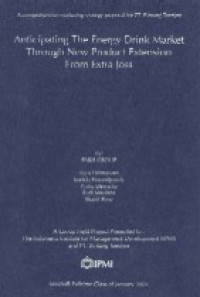
Feasibility Study on Micro Payment Implementation in BCA
| Gmd : Text
| Availability :
| 00000010693 | 321 | (GFP) | Available - Ada |
Bank Central Asia (BCA) was established on August 10th, 1955 at the Jakarta commercial center under the name of Bank Central Asia NV. Since then it rapidly developed and grew and now BCA has become the second largest commercial bank in Indonesia in terms of asset.
Throughout its development, BCA has grown from a used-to-be conventional bank that relies on its tellers in serving the customers to a highest-technology bank that capitalize on the latest development in technology for its operational improvement.
In its operation, BCA is guided by its vision "to be the bank of choice and a major pillar of the Indonesian economy". To realize this vision BCA has developed a mission which are:
.To build centers of excellence in payment settlements and financial solutions for business and individuals
.To understand diverse customer needs and provide the right financial services to optimize customer satisfaction
.To enhance our corporate franchise and stakeholder value
Consistent with its vision and mission, BCA is committed to be a major payment settlement agency in Indonesia, capitalizing on its large customer base and in cooperation with large number of merchants.
To leverage its position as nationwide payment and settlement bank, BCA consistently develops its delivery channels to provide its customers a comfort and convenience in banking transaction, either by improving its brick and mortar service from the 795 domestic branches or by launching electronic banking.
With electronic banking the customers are no longer dependent on branch offices to do their banking transaction. Instead, they can bank anytime and from any place. BCA
currently has a number of electronic banking facilities such as 5000 ATMs and over 5,5 million ATM cardholders. In Electronic banking, BCA has developed internet banking service called "Klik BCA" and Mobile Banking "m-BCA". The number of Klik BCA users in 2006 is around 350.000 users. Mobile banking user in 2006 is around 650.000 users.
In association with more than 70 companies, BCA enables its A TM cardholders not only to withdraw cash and check balances, but also to pay credit card transactions, telephone, electricity and other bills, buy prepaid cellular phone vouchers, purchase of plane tickets and stocks. BCA A TM network is linked with international settlement network, All BCA A TM terminals are integrated with VISA International and MasterCard International network.
What has been developed by BCA so far however only able to address the payment settlement in the macro.payment category. What is now lacking is the means to handle micro-payment transaction which is currently done through cash. The micro-payment transaction is still the dominating majority of the total transaction in Indonesia. Thus this huge market potential has not only attracted the traditional banks but also credit card associations (which at this moment serving mostly the macro-payment transaction),
The chance to offer micro-payment service to the already existing BCA customer represents a huge opportunity not to be missed. A lot can be gained by delivering micropayment for aM the parties involved whether it is for BCA Institution, BCA's customer, as well as participating merchants.
For BCA, the major benefits of the micropayment are: the increases of the customer convenience and loyalty, reduction of the cash handling, the earning from the interest of the floating micropayment deposit, and the closer relationship to the new types of merchants. For Customer, it provides simple and quick payments, reduces the "hassle" of handling cash, and provides better record keeping than cash. Most of all, however, it will bring to the customer the speed and the convenience,
For Merchants, micropayment will increase their operational efficiency due to the simpler and faster cash handling, increase revenue since purchase is no longer limited to cash on hand, and speed consumers through check-out
In this document, feasibility study of micropayment for BCA is being proposed. It starts with characterization of the cash buying behaviors of the most likely segment in which the micropayment will be addressed to. This hypothesis is then verified with a small survey. Based on the identified cash buying criteria, a merchant strategy is developed. Gas station and fast food chain come up as the first priority merchants because they contributes most of the customer cash spending and they are easy to acquire. Marketing and promotional activities also developed based on this result.
Financial Model is later developed to study whether micropayment is financially feasible. Based on the proposed model and its corresponding assumptions, we found that micropayment will yield positive net present value (NPV) and internal rate of return (IRR) of 18.4%. As this project provides positive NPV and aligned with BCA vision and mission to be the major payment settlement agency in Indonesia, we recommend that BCA proceed with this micropayment project.
Research Location : Bank Centra Asia (BCA)
Read at Library Only
| Series Title |
-
|
|---|---|
| Call Number |
321
|
| Publisher Place | Jakarta |
| Collation |
54p.: col.ill.; tables , appendixes ; 30cm.
|
| Language |
English
|
| ISBN/ISSN |
-
|
| Classification |
-
|
| Media Type |
-
|
|---|---|
| Carrier Type |
-
|
| Edition |
-
|
| Subject(s) | |
| Specific Info |
-
|
| Statement |
-
|
| Content Type |
-
|
No other version available







